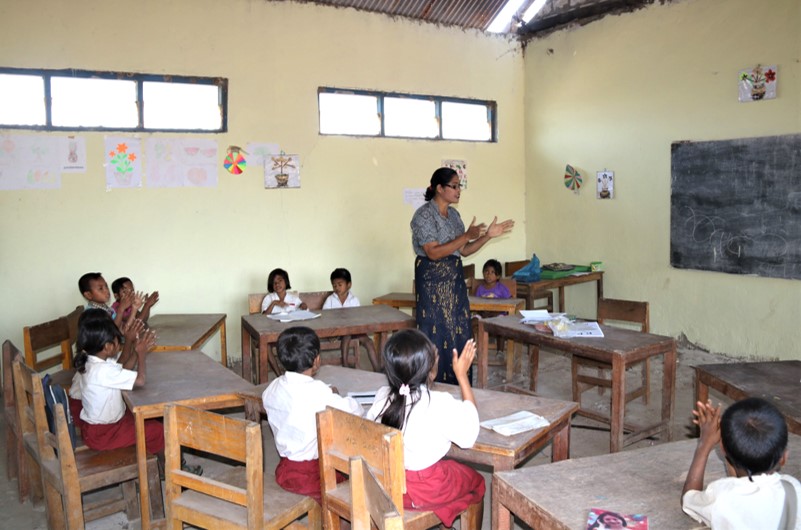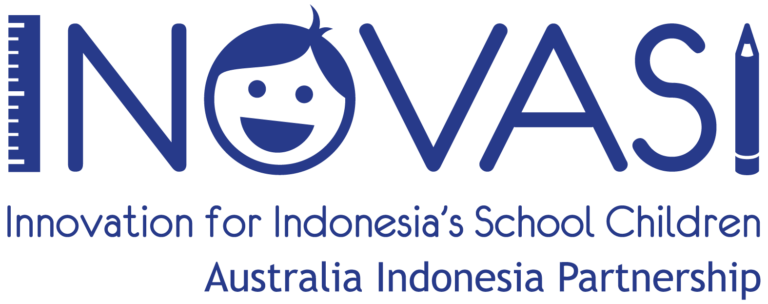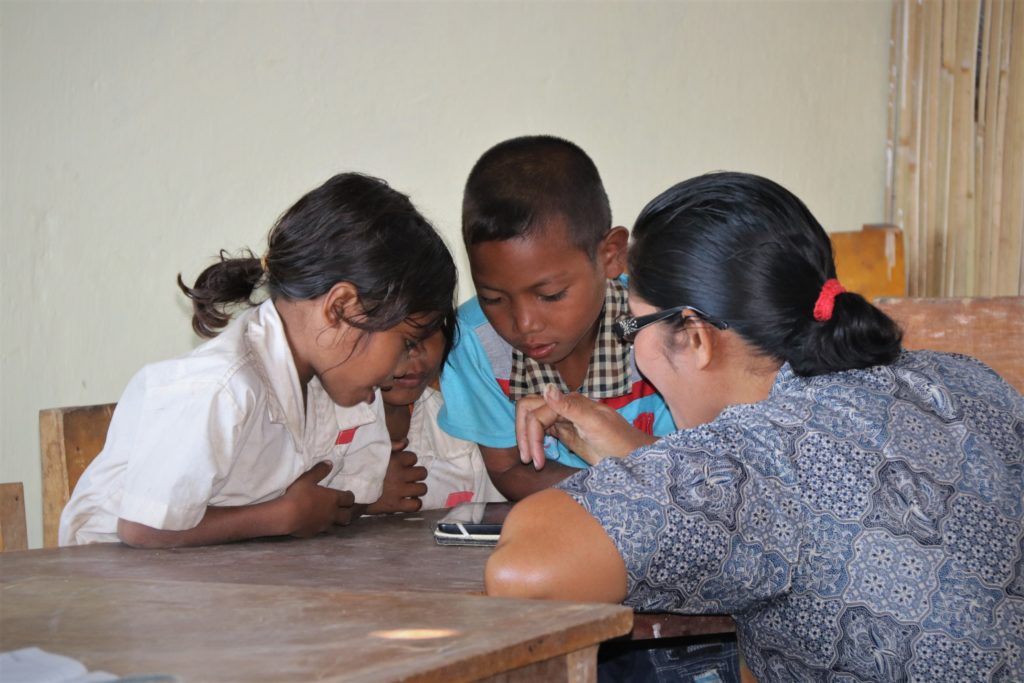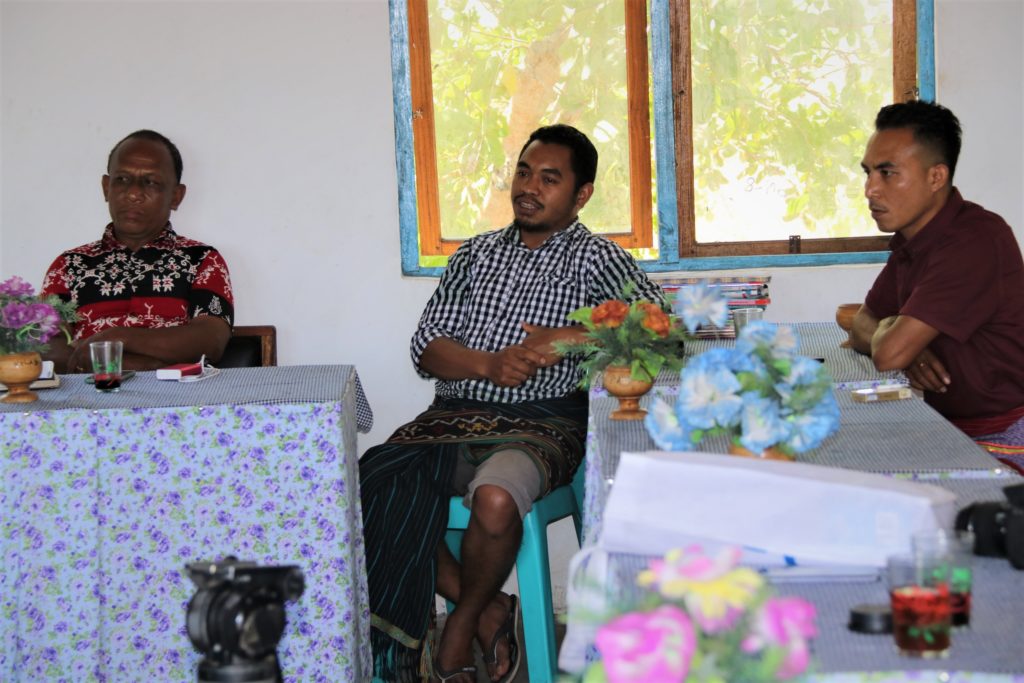
Each student’s appearance varies from the others’. Some wear red and white uniforms on Saturdays; others wear casual clothes. There are those who wear shoes and socks; others have no footwear. Moreover, the students are not well versed in Indonesian; some of them don’t know Indonesian at all.
The students’ varied appearance is not because they don’t want to comply with school regulations; it’s because of their limited ability to buy more than one uniform. The uniforms are often dirty and drenched in sweat from playing or traveling long distances to and from their school.
Adding to this, some students are not able to speak Indonesian. “I remember that I was confused. I even cried. Oh God, I can’t do this. Why am I teaching here? The children don’t know proper Indonesian, and I’m not even a local,” recalls Margaretha Ped Daido, a grade 1 teacher.
Margaretha has been teaching at SDN Batu Karang for the past 15 years. She comes from Flores Island. When she first arrived, she felt frustrated because she didn’t know how to teach children who only speak the local language, Kodi.
However, the condition of the classrooms, the lack of students’ school equipment, and the language barrier didn’t hinder Margaretha’s teaching and learning activities in the classroom.
Her love and compassion for her students fueled her enthusiasm to teach Indonesian. In order to do so, Margaretha slowly learned Kodi so she could communicate with her students. And after receiving assistance from the Mother Tongue–Based Multilingual Education (MTB-MLE) program in collaboration with the Southwest Sumba Regency Government and INOVASI, she has been able to apply the use of regional languages to transition to the Indonesian language.
In order to help her students understand lessons more quickly, Margaretha invited them to get to know the names of objects around them. In addition to this, story books that have been translated into Kodi helped her convey lesson material to her students, especially now that there are smart gadgets that contain stories with Kodi and Indonesian translations. The children who used to just come to school, sat down, and remained still, are now actively involved in learning.
Margaretha’s presence at SDN Batu Karang is not without reason. Being a remote school that lacks resources is the main issue. Margaretha isn’t the only outsider; there are other Frontline Teachers (Guru Garis Depan, or GGD) from other area stationed here too.
With such limited resources, Kedu Rabaho was not given many options. Even as a deaf person, he was appointed as the principal of this school because no one else wanted take the position. Every day, Kedu must ask the teachers to speak loudly so he can attempt to capture their voices. Sometimes teachers write messages on a piece of paper for him.
Despite the school’s various limitations, the enthusiasm to educate Southwest Sumba children, especially in the Kodi area, has not been dampened.
In the eyes of Kedu Rabaho, the presence of this program has really helped children learn to read. “The books and tablets that have been provided have truly helped the children learn to read. Of course their abilities have only slightly improved, but the available media has certainly made them enthusiastic to learn,” he concluded.








